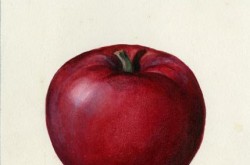Alouette 1 Satellite
This article was originally written and submitted as part of a Canada 150 Project, the Innovation Storybook, to crowdsource stories of Canadian innovation with partners across Canada. The content has since been migrated to Ingenium’s Channel, a digital hub featuring curated content related to science, technology and innovation.
In 1962, Canada became the third country after the Soviet Union and the United States to put a satellite in orbit.
Alouette 1’s mission was to conduct scientific tests in the ionosphere, the atmospheric layer used to reflect radio waves for long-distance communications. Alouette 1 featured innovations such as long lasting nickel-cadmium batteries, solar panels, transistors, and extendible antennae. Alouette 1 proved remarkably durable and useful: intended to operate for one year, the satellite endured for 10, transmitting millions of ionospheric readings to scientists before it was powered down.
The Alouette satellite program, which included the participation of the Defence Research Telecommunications Establishment and of Spar Aerospace, laid the foundation for Canada’s Space program in the following decades and its specialization in satellite communications, remote sensing, search and rescue, and robotics.
The Alouette in the Museum’s collection is the prototype and is known as S27-2.
Transcript
Alouette-I Prototype, 1961
Artifact No.: 1973.0375
Source: Defence Research Telecommunications Establishment, now Communications Research Centre Canada
Alouette-1 was launched September 29, 1962 by a Thor-Agena rocket from Vandenberg Air Force Base in California, USA, marking Canada's entry into space.
Canada became the third country after the USSR and the USA to have a satellite of its own in orbit.
From space, Alouette probed the ionosphere, a layer of the atmosphere used to reflect radio waves for long distance communications.
Data sent to ground stations was used by scientists to study how the ionosphere affected radio communications in Canada's North.



























